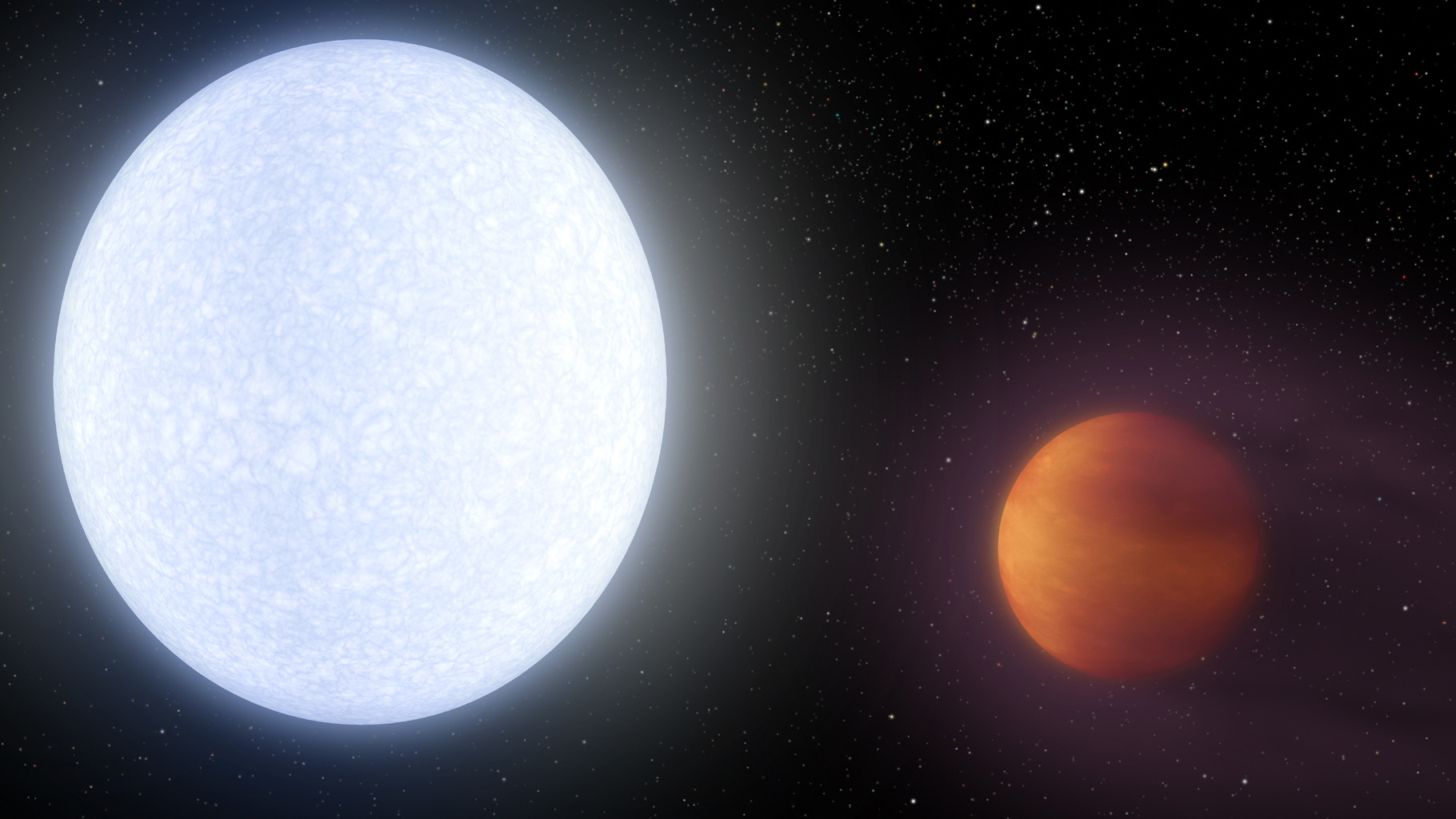JPL: Cooking Up Alien Atmospheres on Earth
Posted: Sat Mar 16, 2019 8:47 pm
Cooking Up Alien Atmospheres on Earth
NASA | JPL-Caltech | Exoplanets | 2019 Mar 14
Photochemistry in Hot H2-Dominated Exoplanet Atmospheres ~ Benjamin Fleury et al
NASA | JPL-Caltech | Exoplanets | 2019 Mar 14
Researchers at NASA's Jet Propulsion Laboratory in Pasadena, California, are cooking up an alien atmosphere right here on Earth. In a new study, JPL scientists used a high-temperature "oven" to heat a mixture of hydrogen and carbon monoxide to more than 2,000 degrees Fahrenheit (1,100 Celsius), about the temperature of molten lava. The aim was to simulate conditions that might be found in the atmospheres of a special class of exoplanets (planets outside our solar system) called "hot Jupiters."
Hot Jupiters are gas giants that orbit very close to their parent star, unlike any of the planets in our solar system. While Earth takes 365 days to orbit the Sun, hot Jupiters orbit their stars in less than 10 days. Their close proximity to a star means their temperatures can range from 1,000 to 5,000 degrees Fahrenheit (530 to 2,800 degrees Celsius) or even hotter. By comparison, a hot day on the surface of Mercury (which takes 88 days to orbit the Sun) reaches about 800 degrees Fahrenheit (430 degrees Celsius). ...
The team started with a simple chemical mixture of mostly hydrogen gas and 0.3 percent carbon monoxide gas. These molecules are extremely common in the universe and in early solar systems, and they could reasonably compose the atmosphere of a hot Jupiter. Then the team heated the mixture to between 620 and 2,240 degrees Fahrenheit (330 and 1,230 Celsius).
The team also exposed the laboratory brew to a high dose of ultraviolet radiation - similar to what a hot Jupiter would experience orbiting so close to its parent star. The UV light proved to be a potent ingredient. It was largely responsible for some of the study's more surprising results about the chemistry that might be taking place in these toasty atmospheres. ...
Photochemistry in Hot H2-Dominated Exoplanet Atmospheres ~ Benjamin Fleury et al
- Astrophysical Journal 871(2):158 (2019 Feb 01) DOI: 10.3847/1538-4357/aaf79f
